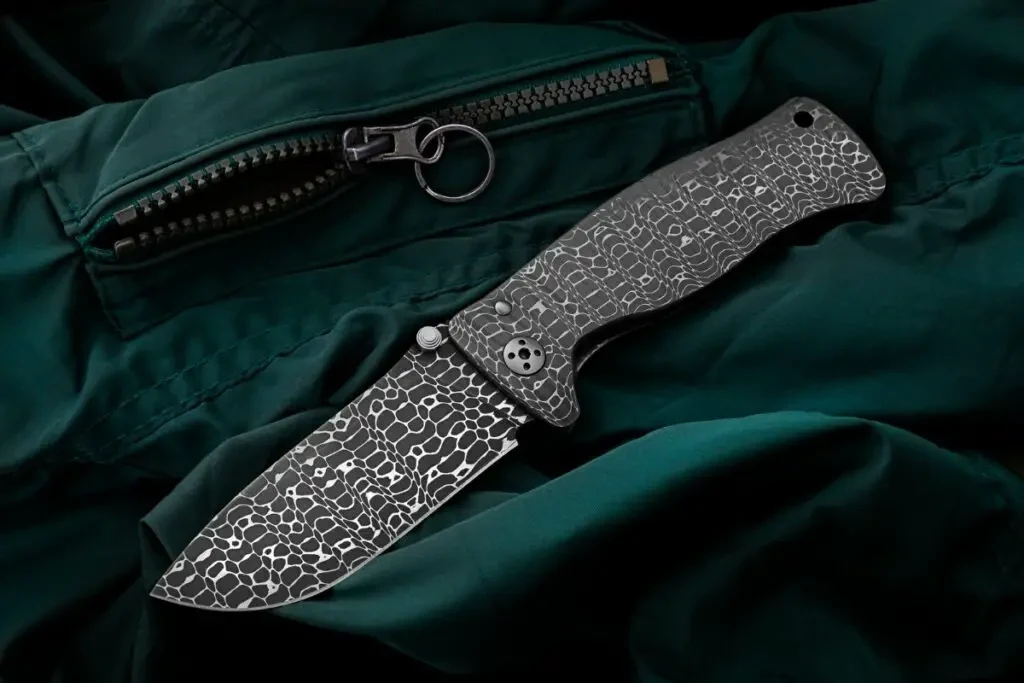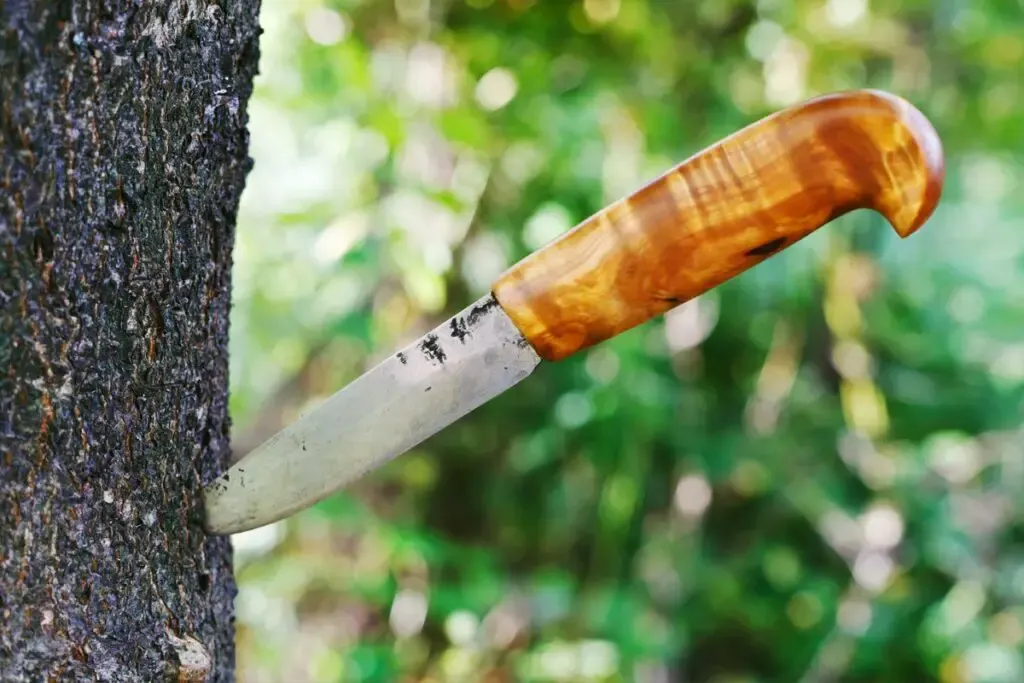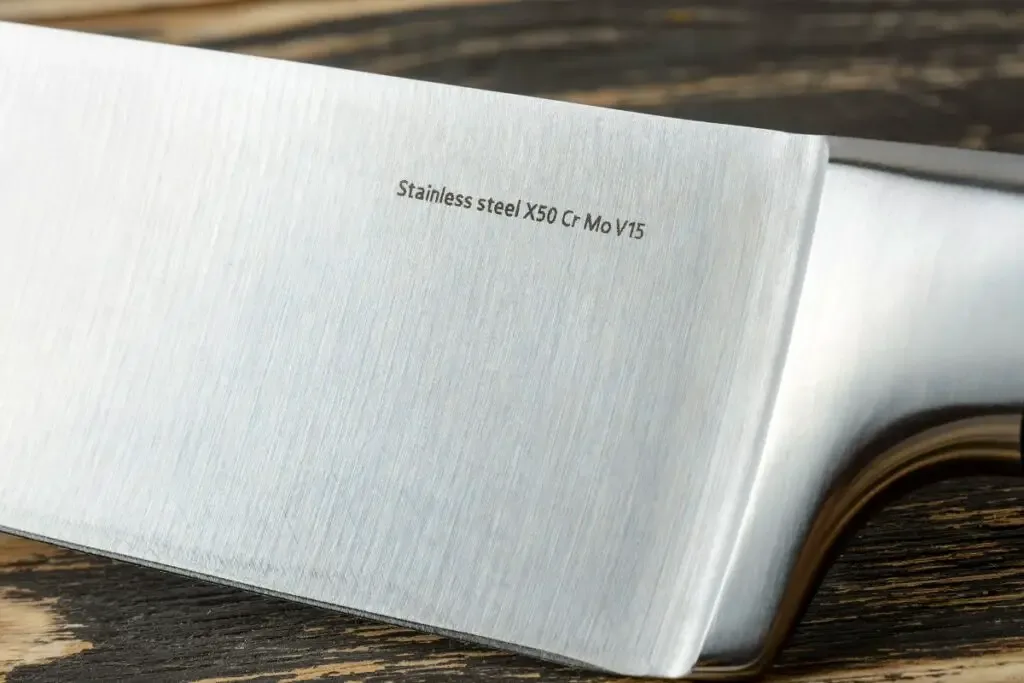As an Amazon Associate, we earn from qualifying purchases with no additional costs for you.
A common question around the internet is, what is the easiest knife to sharpen? It’s a complicated question because of the sheer number of different steel types out there. We’ll dive into this topic, but keep in mind you can sharpen a stick of butter with extreme ease, but it won’t hold an edge and will therefore be totally useless to you. Softer steel is easier to sharpen but won’t hold an edge well.
A steel that’s easy to sharpen and hold a great edge is 1095 high carbon steel. It’s hard but flexible, chip resistant and super durable. It strikes the perfect balance between ease of sharpening and holding an edge – but another contender is VG-10 steel.
Let’s go on to explore, in more detail, which popular knife steels are easy to sharpen. We’ll be looking at the most common knife steels – like high carbon steel of various types, stainless steels and even mixes between the two.
If you are interested in checking out the best whetstones for sharpening your knives we recommend and use you can find them by clicking here (Amazon link).

What Is The Easiest Knife Steel To Sharpen?
There are many contenders for this title, but it has to go to 1095 carbon steel. It’s a strong steel and sharpens easily, considering how well it keeps an edge. That said, it is more prone to rust than some other steels. This can be avoided by proper and regular maintenance, however.
1095 carbon steel is a sought-after knife steel for its resistance to chipping and ease of sharpening. That’s why it’s commonly used for survival-type knives. 420hc steel is another good option, but it’s worse than 1095 at holding an edge, so we prefer the 1095 carbon.
1095 is so called because of it’s 95% carbon content – it also has lower manganese levels, making it softer than some other steels (therefore, easy to sharpen).
The pro of a softer steel is that it’s more flexible and less likely to break. The drawback is (usually) poorer edge retention, but brittle steel is not recommended for most knives.
Why Is 1095 Carbon Steel The Easiest Knife Steel To Sharpen?
The short answer is that because of its softness, your sharpening tool can dig into the steel easier. This helps you shave off more of the edge faster and not have to put in a lot of elbow grease to get your blade sharp. This makes it a breeze to sharpen for beginners and experts alike.
This property comes from its lower manganese content. Less hardness also means your blade will be less brittle – that’s why 1095 makes a great knife steel.
You’ll need to sharpen it more regularly, but if you ever find yourself in a survival situation you won’t have to worry about shattering your knife.
There are many other great knife steels out there, but 1095 is among the best. It’s resistant to chipping, holds a great edge considering it’s softness, and is easy enough to sharpen.
List of Knife Blades: Are They Easy To Sharpen?
With all the contenders out there, we’d be writing a book if we dove into each one separately. So to make it quick and easy for you, here’s a simple table with some popular knife steels:
| Steel Type | Easy To Sharpen? |
|---|---|
| D2 Steel | YES |
| AUS 8 Steel | YES |
| S35VN Steel | NO |
| S30V Steel | NO |
| 440C Steel | YES |
| K390 Steel | YES |
| CPV 3V Steel | NO |
| CPM 154 Steel | YES |
| M390 Steel | NO |
Steel matters. But so does the manufacturing process. How a blade is tempered can make all the difference between a hardy, long-lasting knife and something that’ll break the first time it’s put to any strenuous test.
When looking for a knife steel, don’t get caught up by the type of steel alone. Consider also the manufacturer’s reputation and the process followed during manufacturing, tempering and quenching.
When all things in the knife-making process are equal, however, make sure to go for a steel that’s rust-resistant, holds a good edge and isn’t brittle. Bonus if it’s easy to sharpen as well. (You can’t go wrong with 1095 Carbon).
BTW: If you want to know more about Japanese and other knives and their sharpening, check out the books listed above. These books are recommended by professional sharpeners and knife makers (Amazon links):
- Japanese Kitchen Knives: Essential Techniques and Recipes
- The Knifenerd Guide to Japanese Knives
- Knife: The Culture, Craft, and Cult of the Cook’s Knife
- Sharp: The Definitive Introduction to Knives, Sharpening, and Cutting Techniques, with Recipes from Great Chefs
TIP: Almost all knives are double bevel knives. Do you know what is the difference between these two knives types? Find out the answer in the article below:
Single Vs. Double Bevel Knife: What’s The Difference?
Is Damascus Steel Easy To Sharpen?

Damascus steel is a beautiful type of blade that’s created by folding heated layers of steel together. It’s a difficult technique that can take many years to master. But is it easy to sharpen?
Since damascus isn’t really a steel type, but a manufacturing process, it really depends on what steel you use to make the damascus. Typically damascus will be made out of 15N20 carbon steel, which is potentially tougher than 1095. That said, it all depends on how it’s made.
Should damascus be made out of 15N20, it will be harder to sharpen than 1095, but not by a significant amount. 15N20 is still considered easy to sharpen – more so than most stainless steel, anyway.
If you haven’t got a damascus blade in your collection yet, it’s highly recommended to invest in a well-made one. They are, more often than not, fantastically-made pieces that could last a lifetime and more – even becoming heirloom pieces.
Is Stainless Steel Easy To Sharpen?
Stainless Steel is harder to sharpen as it has added elements such as nickel, molybdenum, copper, chromium, and titanium, which makes it a much harder steel to work with. That said, the 400-series of stainless steels are becoming more popular with knife makers due to being easier to sharpen.
It can be quite tricky to go from sharpening carbon steel to stainless steel like CMP110V.
Newer stainless steel frequently has high carbide-forming alloys like vanadium, making them much more difficult to sharpen. Again, it all depends on the type of stainless steel your blade is made from.
AUS 8 stainless steel is a high-quality steel used in the construction of knives and is easy to sharpen while being a very strong steel and offering good edge retention.
Stainless steel knives not only offer excellent corrosion resistance but are an all-around good metal to use for knives.
TIP: Elmax and Maxamet steels are quite popular among knife makers. Do you know what is the sharp difference between these two steels? Find out the answer in the article below:
Elmax vs. Maxamet Steel: What’s The Sharp Difference?
Is Carbon Steel Easy To Sharpen?

High carbon steel is easy to sharpen. It’s often considered far easier to sharpen than most stainless steel. That said, the ease of sharpening carbon steel will largely depend on the heat treat and carbon / manganese content, as well as the tool you’re using.
We already mentioned that our pick, specifically, is 1095 carbon steel because of its balance between easiness to sharpen and edge retention.
Being carbon steel, it can also be sharpened to a finer edge than many other steels, giving you extreme cutting power.
However, even though carbon steel is resistant to chipping, a finer edge would chip more easily than a slightly duller (but no less dangerous) edge.
Carbon steel is “softer” steel – but at an average low 60’s on the Rockwell hardness scale, it’s still a formidable knife.
It holds a good edge, is fairly easy to sharpen, and, overall, you just cannot go wrong with a good 1095 carbon steel knife (there’s a reason most commercial brands have adopted this steel for their knives).
Is VG-10 Steel Easy To Sharpen?
VG-10 is a fantastic steel that, had it been easier to sharpen, might have beaten 1095 to the top spot. It’s a high-carbon stainless steel, holds a keen edge and it’s not all that hard to sharpen.
However, it is slightly more work than 1095 and some other carbon steels, thanks to its higher vanadium content. This causes carbides to form within the steel, increasing hardness and edge retention – but also increasing the difficulty of sharpening.
VG-10 steel has been adopted in more and more kitchen knives as well as high-end survival knives. This steel can also take some punishment, so whether you choose 1095 or VG-10 is really up to your personal preference.
VG-10 doesn’t require any special sharpening tools – you can use the same tools you’d use for your 1095 carbon steel knife – whether that be a whetstone or table-top sharpener (we recommend the latter to beginners). Some of the harder steels may even require a diamond stone.
Ease Of Sharpening Vs. Edge Retention

When choosing a knife, it’s crucial to consider the balance between ease of sharpening and edge retention. A knife that is easy to sharpen may not hold its edge for long, while a knife with excellent edge retention may be challenging to sharpen. Different steel types offer varying levels of sharpening ease and edge retention, impacting the overall performance and maintenance of the knife.
Understanding The Balance
The balance between sharpening ease and edge retention is influenced by the steel’s hardness, carbon content, and other alloying elements. Harder steels typically have better edge retention but can be difficult to sharpen, while softer steels can be sharpened easily but may lose their edge quickly.
Comparative Analysis
Below is a comparative table showcasing the ease of sharpening and edge retention of the different steel types we have discussed.
| Steel Type | Ease of Sharpening | Edge Retention |
|---|---|---|
| 1095 Carbon Steel | High | Moderate |
| VG-10 | Moderate | High |
| Damascus Steel | Low | Very High |
| Stainless Steel | Variable | Variable |
- 1095 Carbon Steel: Known for its ease of sharpening, 1095 carbon steel offers moderate edge retention, making it a balanced choice for those who prioritize maintenance convenience.
- VG-10: VG-10 steel is moderately easy to sharpen and boasts high edge retention, suitable for those who desire long-lasting sharpness with manageable sharpening efforts.
- Damascus Steel: Damascus steel, with its intricate patterns, is challenging to sharpen but excels in edge retention, ideal for those seeking performance and aesthetics.
- Stainless Steel: The ease of sharpening and edge retention in stainless steel varies widely depending on the specific alloy, offering flexibility in choice based on individual preferences.
Making The Right Choice
When selecting a knife steel, consider your sharpening skills, the frequency of use, and your willingness to maintain the knife. If you use your knife extensively and prefer minimal maintenance, opt for steel with high edge retention. Conversely, if you are new to knife sharpening or don’t mind frequent sharpening, choose steel that is easier to sharpen.
Understanding the relationship between ease of sharpening and edge retention is pivotal in choosing the right knife steel. By evaluating your needs, preferences, and maintenance willingness, you can select a steel type that aligns with your culinary lifestyle, ensuring a satisfying and efficient cutting experience.
1095 Is The Way To Go – Unless…
1095 is your go-to steel for knives. Especially if you’re new to the world of knives, we’d recommend 1095 steel any day of the week.
It makes for a great knife for both beginners and advanced owners. Though VG-10 is worth a look, as is 15N20 and basically any other steel that holds a good edge and remains fairly easy to sharpen. You’ll also want something that isn’t brittle. The last thing you need is for your knife to shatter during heavy use.
If you can pony up the money, we’d highly recommend a good Damascus knife though.
TIP: Does sharpening a knife remove metal from the knife steel? Find out the answer in the article below:
Does Sharpening A Knife Remove Metal From It? Main Factors
